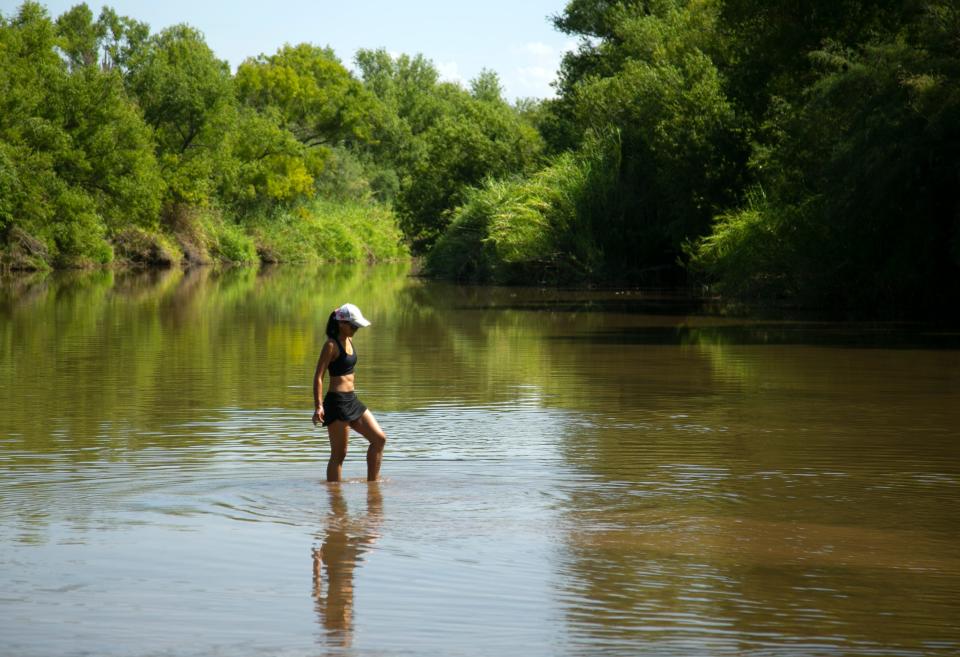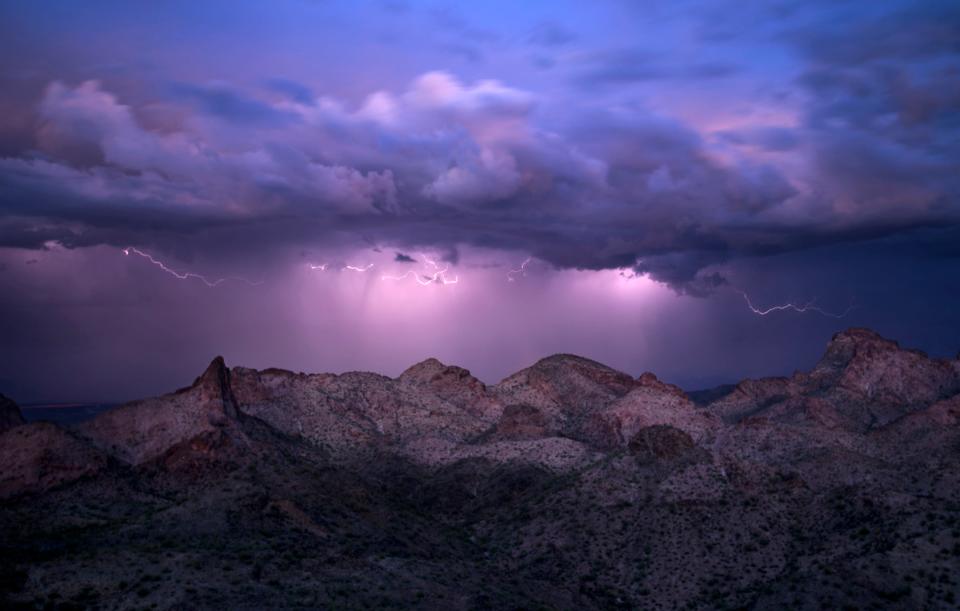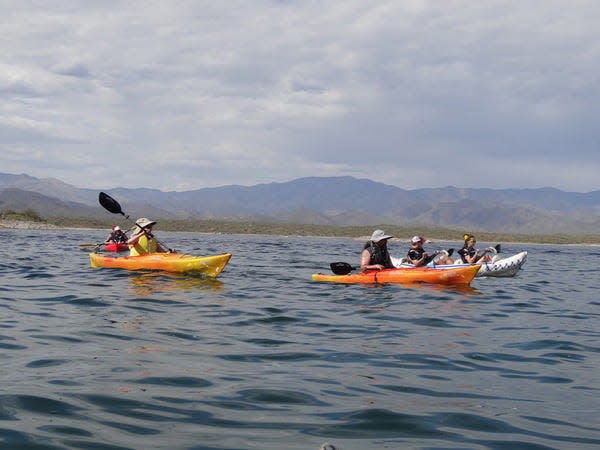New places to play: See where Maricopa County hopes to trailblaze new regional parks
Maricopa County is poised to develop new parks in coming years after supervisors unanimously approved an updated master plan focused heavily on expanding recreational and open space opportunities for residents.
The plan lays out a vision for the county's regional parks system through 2030. It hinges on protecting and preserving desert land on the edges of the Valley as the county's population booms.
"The growth is phenomenal," said Board of Supervisors Chairman Clint Hickman. "People want to live here. And we want to continue to protect and conserve what we love."
The system currently includes 12 parks spanning more than 120,000 acres. That makes it one of the largest regional park systems in the nation, county officials say.
Last year, the parks welcomed more than 2.7 million visitors. Officials project that number will grow to about 3.7 million in the next decade.
The plan would add to the system via partnerships with the U.S. Forest Service and the Bureau of Land Management. Its priority projects largely aim to develop pieces of federal land into regional parks managed cooperatively by the county and federal agencies.
That would protect those areas from increased urban pressures while expanding recreation opportunities, said Maricopa County Parks and Recreation Director RJ Cardin.
Still, residents shouldn't expect to see immediate changes. Cardin called the process of working with federal agencies to plan new park areas "time-intensive" and noted it would require "extensive public input."
"Realistically, we could expect the initial process to take ten years before we would collaborate to begin developing any new facilities as funding permits," he said. "We would not anticipate working on more than one or two areas at a time."
New programs, expansions in the works for existing trails and parks
Several components of the master plan focus on expanding recreation opportunities in the existing regional parks system to accommodate population growth as new recreation areas are developed.
Parks officials intend to develop a nature outreach program to help connect urban dwellers to regional parks, which are generally much larger and less manicured than city parks. The program would offer transportation to regional parks, nature walks, weekend camps and other recreational opportunities that officials hope will help draw underserved groups to the county's open spaces.
Electronic recycling: Scottsdale to hold final event of the year
The plan includes possible expansions to the Maricopa Trail, a 315-mile loop that rings the Valley and already connects 10 regional parks. The trail took nearly two decades to develop and was officially completed in 2018, but county officials have long hoped to add spurs that could connect the trail system to other parks and preserves.
At the top of the priority list are paths that would connect the trail to Buckeye Hills Regional Park, Vulture Mountains Recreation Area and Hassayampa River Preserve. All of those parks are located in western Maricopa County.
Buckeye Hills Regional Park is slated for additional changes. The park, established in 2006, is largely undeveloped outside of a shooting range. As the West Valley grows, officials plan to add trails and other recreational amenities.
New parks coming
By 2050, county officials hope to add four new regional parks to the existing system. They intend to acquire land for the areas in the next decade.
New River Mesa Area, north of Anthem and just south of Tonto National Forest, is currently managed by the U.S. Forest Service. The area is largely undeveloped but features a "pristine" desert environment, according to the county's master plan.
It could serve as a regional gateway park into Tonto National Forest, officials say. The area could also connect with nearby Daisy Mountain and the Maricopa Trail, which runs south of the property.
Officials hope to develop another park along the lower Verde River. The stretch of desert from Box Bar to Needle Rock Day-Use Area is owned and operated by Tonto National Forest, but the area is increasingly seeing visitors as nearby urban areas grow. County officials see an opportunity for a partnership to help manage the region and mitigate environmental impacts as development continues.

In the West Valley, Saddle Mountain Area is currently under the Bureau of Land Management. The area is adjacent to "sensitive wilderness areas," according to the plan. It could serve as an important buffer between those backcountry lands and rapidly growing urban areas.
Officials also hope the site, located near Tonopah, could provide additional recreation opportunities as the West Valley grows.
Buckeye Hills Regional Park could get a neighbor. About 25,800 acres of land east of State Highway 85 is currently owned by the Bureau of Land Management. County officials believe it could be developed into a regional park in partnership with that agency and the city of Buckeye.
The plan lists the area an opportunity for "an natural expansion of the park system," noting it could also connect to nearby Estrella Mountain Regional Park.

Long-term opportunities
County officials have other areas they are eyeing for projects far in the future.
The master plan lists opportunities for parks in the northeast Valley, including ones in the vicinity of Seven Springs, Horseshoe Lake, Bartlett Lake and Table Mesa.
It also hints at parks near Hummingbird Springs, Harquahala Mountain, the Big Horn Mountains, the Eagletail Mountains and the Painted Rocks Reservoir in the West Valley.
Plans to develop parks in those areas are currently "aspirational," Cardin said. In the decades to come, he said parks officials will look at population growth and other factors to determine which ones are ultimately established.
How to fund the changes
Cardin said the plan is forward-thinking, so officials don't yet know how much all of the changes in coming years could cost.
But he doesn't expect the expansions will be funded entirely by the county. Other agencies working with county officials to develop the new parks are likely to chip in.
"Once partnership agreements are in place and site master plans are completed depicting the level of improvements, funding levels for each partner will be determined," he said. "As new park or area development opportunities are finalized, funding resources will be developed."

He predicts the final funding for each park will be a mix of federal funds, grants, county general funds and any other resources that emerge in the next decade.
Maintenance of existing parkland is funded by county general funds, grants, park user fees and concessionaire revenues, he said. Volunteers also help keep parks clean and open for the public.
The county currently charges a $7 day-use fee for vehicle entry into most of its parks. Camping fees start at $15 for primitive sites and go up to $40 for shaded RV sites with water and electricity.
Cardin said user fees are an "important contributor to the overall park maintenance costs," and the master plan calls for those fees to be updated. Possible changes range from developing special, fee-based programs to implementing "peak use" fees during times when the parks tend to see more visitors.
Still, Cardin said the county aims to keep the fees "as low as possible to encourage use."
The master plan also proposes the county explore implementing a dedicated tax or pursuing bond funding to develop future parks.
Sasha Hupka covers county government and regional issues for The Arizona Republic. Do you have a tip? Reach her at sasha.hupka@arizonarepublic.com. Follow her on X, formerly Twitter: @SashaHupka. Follow her on Instagram or Threads: @sashahupkasnaps.
This article originally appeared on Arizona Republic: Maricopa county aims to create new parks under updated master plan

